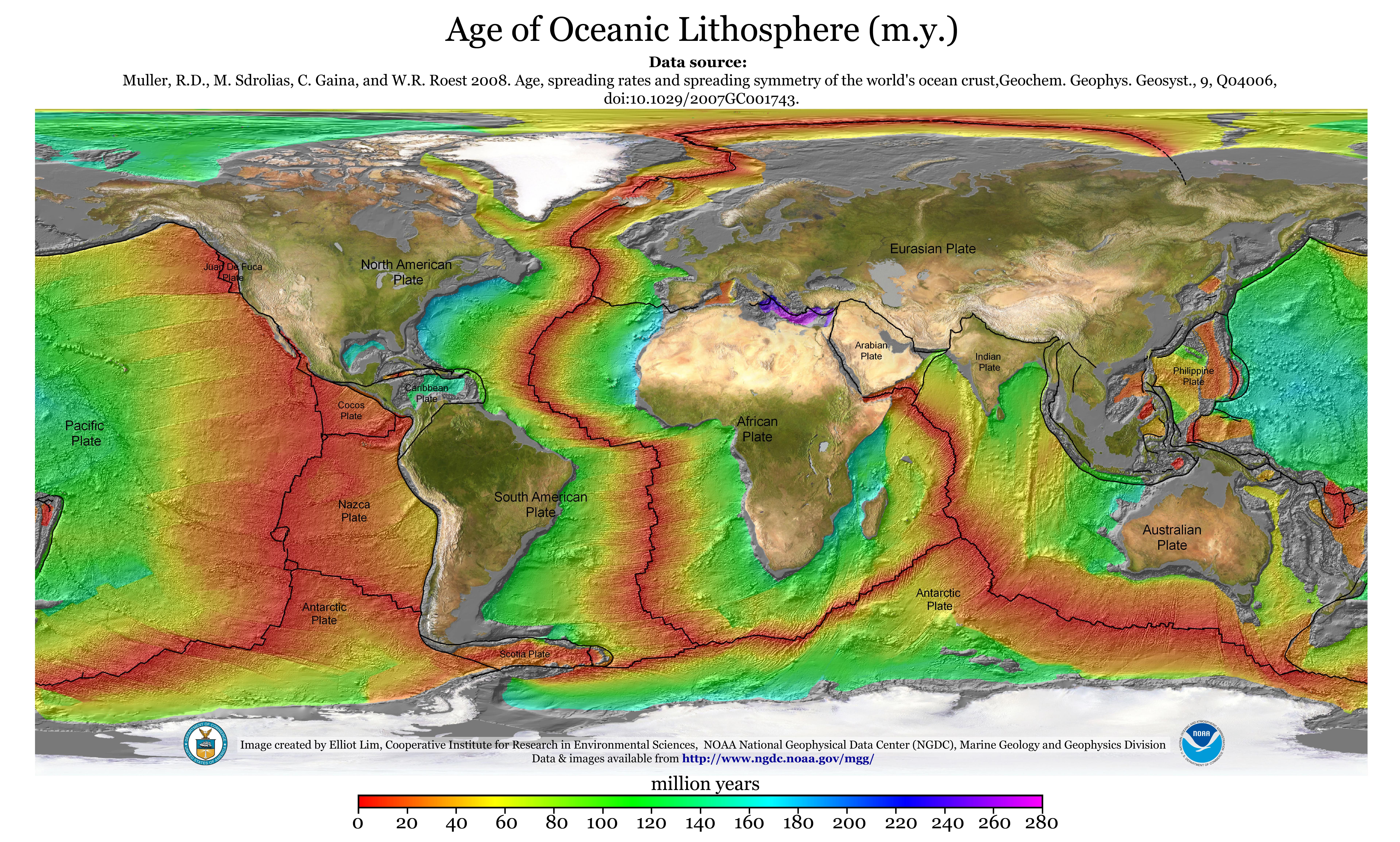Use the above equation to calculate spreading rate.
Sea floor spreading rate of pacific.
Sea floor spreading rates from four locations along the nazca pacific plate boundary and one along the juan de fuca pacific plate boundary show variations over the past 2 4 m y with decreasing rates prior to the jaramillo to olduvai time interval 0 92 1 73 m y.
Ranges of spreading throughout the world s oceans.
See also continental drift a veritable legion of evidence supports the seafloor spreading hypothesis.
1cm yr to 10 cm yr.
The mid atlantic ridge is a slow spreading center while the east pacific rise is an example of fast spreading.
Wherever continents are bordered by deep sea trench systems as in the pacific ocean the ocean floor is plunged downward underthrusting the continents and ultimately reentering and dissolving in earth s mantle from which it had originated.
Seafloor spreading rates are much more rapid in the pacific ocean than in the atlantic and indian oceans.
At spreading rates of about 15 cm 6 inches per year the entire crust beneath the pacific ocean about 15 000 km 9 300 miles wide could be produced in 100 million years.
The mid atlantic ridge for instance separates the north american plate from the eurasian plate and the south american plate from the african plate the east pacific rise is a mid ocean ridge that runs through the eastern pacific ocean and separates the pacific plate from the north american.
Ago and increasing rates since then.
The pacific is also home to one of the world s most active spreading centers the east pacific rise with spreading rates of up to 145 4 mm yr between the pacific and nazca plates.
Measure from the center of the spreading center to a known age point on the plate rather than from 65 ma on the eastern plate to 65 ma on the western.
At the east pacific rise which is pushing a plate into the west coast of south america the rate is 12 6 inches 32 2 cm.
Other pacific area volcanic phenomena in mid plate and convergent boundary settings also show.
The sea floor spread.

